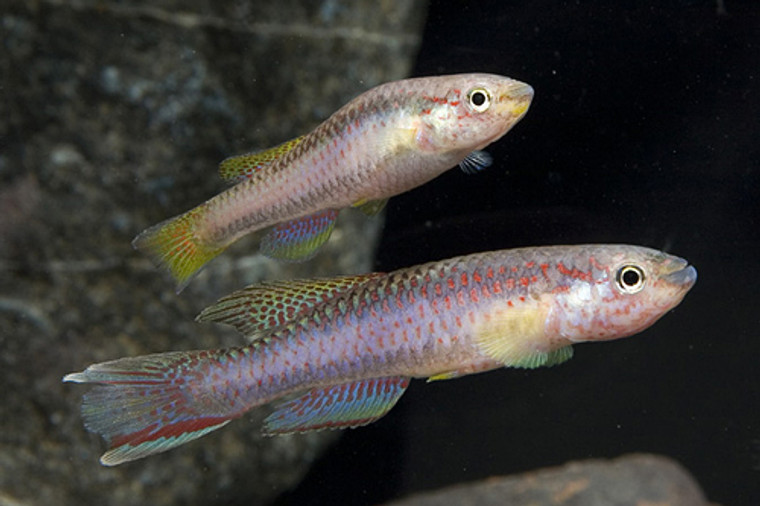A killifish is any of various oviparous (egg-laying) cyprinodontiform fish including families Aplocheilidae, Cyprinodontidae, Fundulidae, Nothobranchiidae, Profundulidae, Rivulidae and Valenciidae. Altogether, there are some 1270 different species of killifish, the biggest family being Rivulidae, containing more than 320 species. Although killifish is commonly used as a blanket or generic description, some species belonging to that family have their own common names, such as the pupfish and the mummichog. The name killifish is derived from the Dutch word "kilde", meaning small creek, puddle. Because of living in ephemeral waters, the eggs of most killifish can survive periods of partial dehydration. Like seeds, the eggs can be sent by mail without water. Most killies are small fish, from one to two inches , with the largest species growing to just under six inches. Killifish are found mainly in fresh or brackish waters in the Americas, as far south as Argentina and as far north as southern Ontario. There are also species in southern Europe, in much of Africa as far south as KwaZulu-Natal, South Africa, in the Middle East and Asia , and on several Indian Ocean islands. The majority of killifish are found in permanent streams, rivers, and lakes, and live between two and three years. Some specialized forms live in temporary ponds and flood plains, and typically have a much shorter lifespan. Such species, known as "annuals", live no longer than nine months. Many killifish are lavishly coloured; and most species are easy to keep and breed in an aquarium. Flagfish, native to south Florida, are another species of killifish commonly found in pet stores. They are useful in aquariums for algae control.

